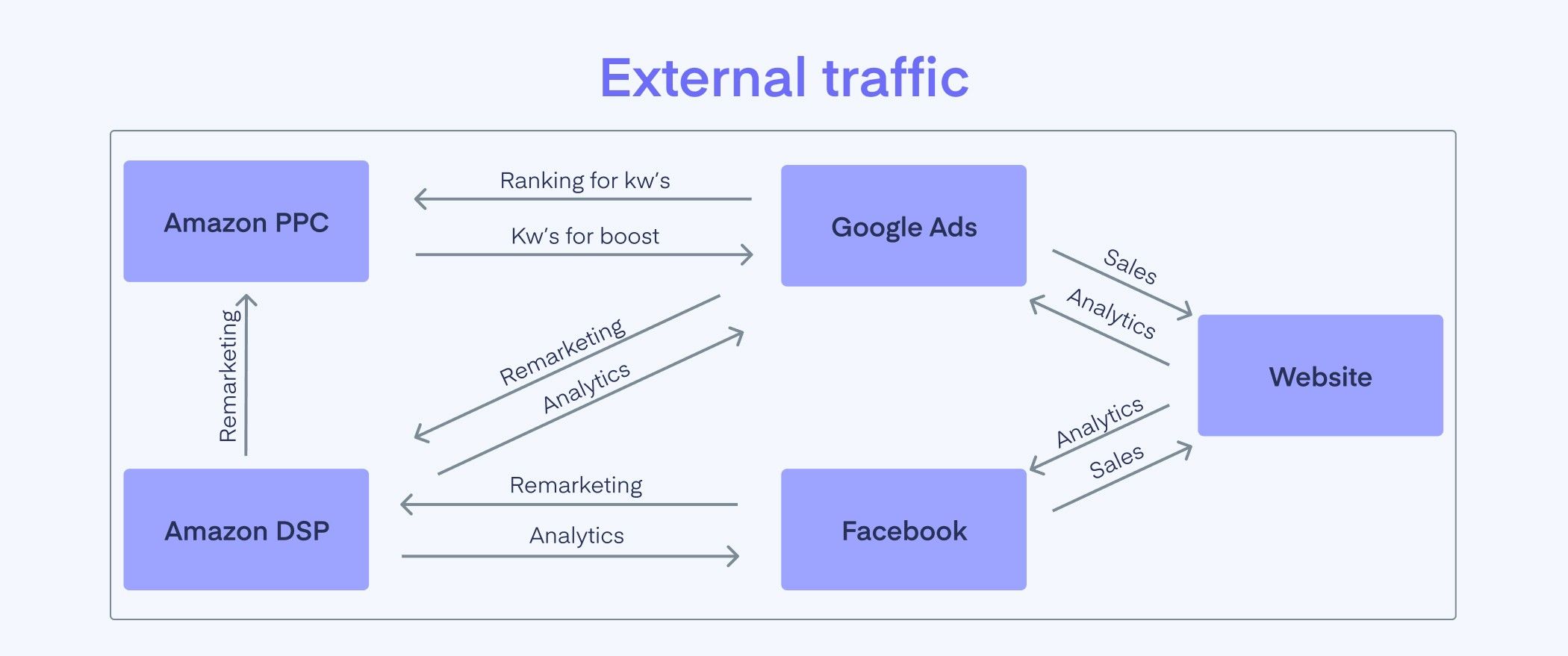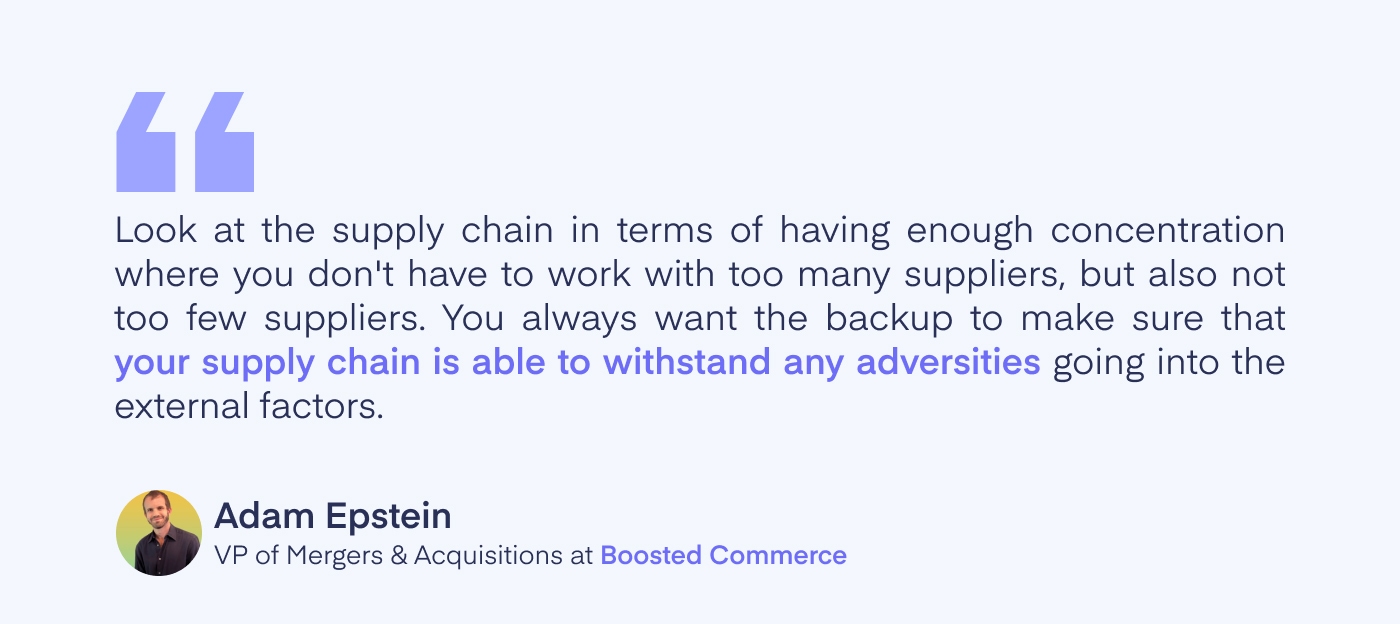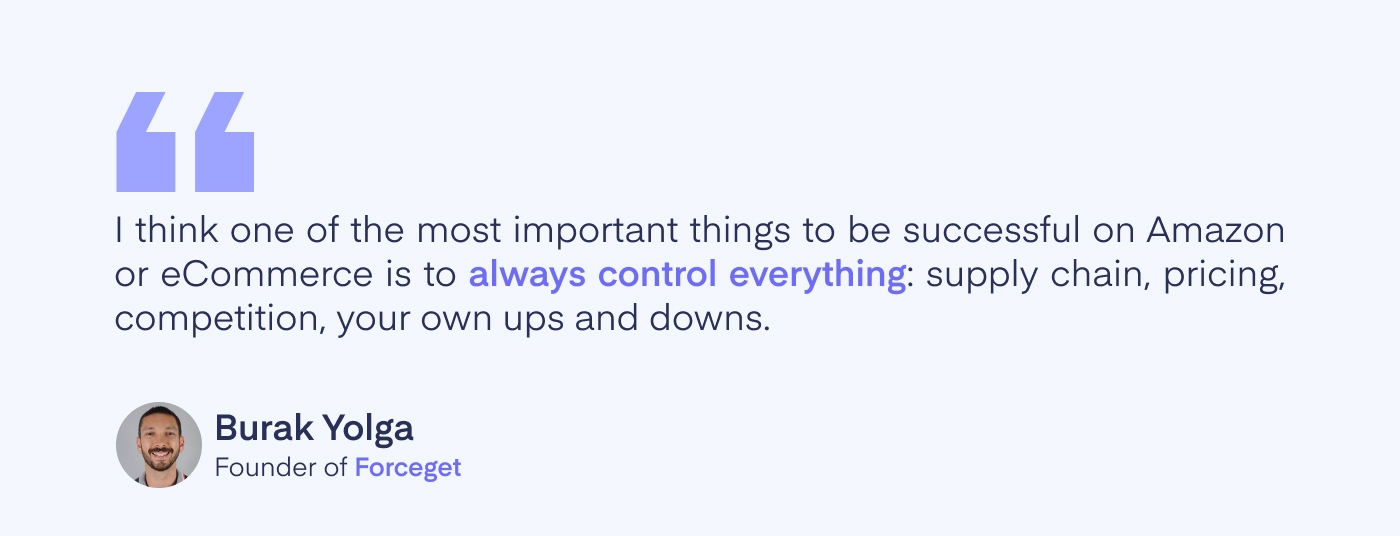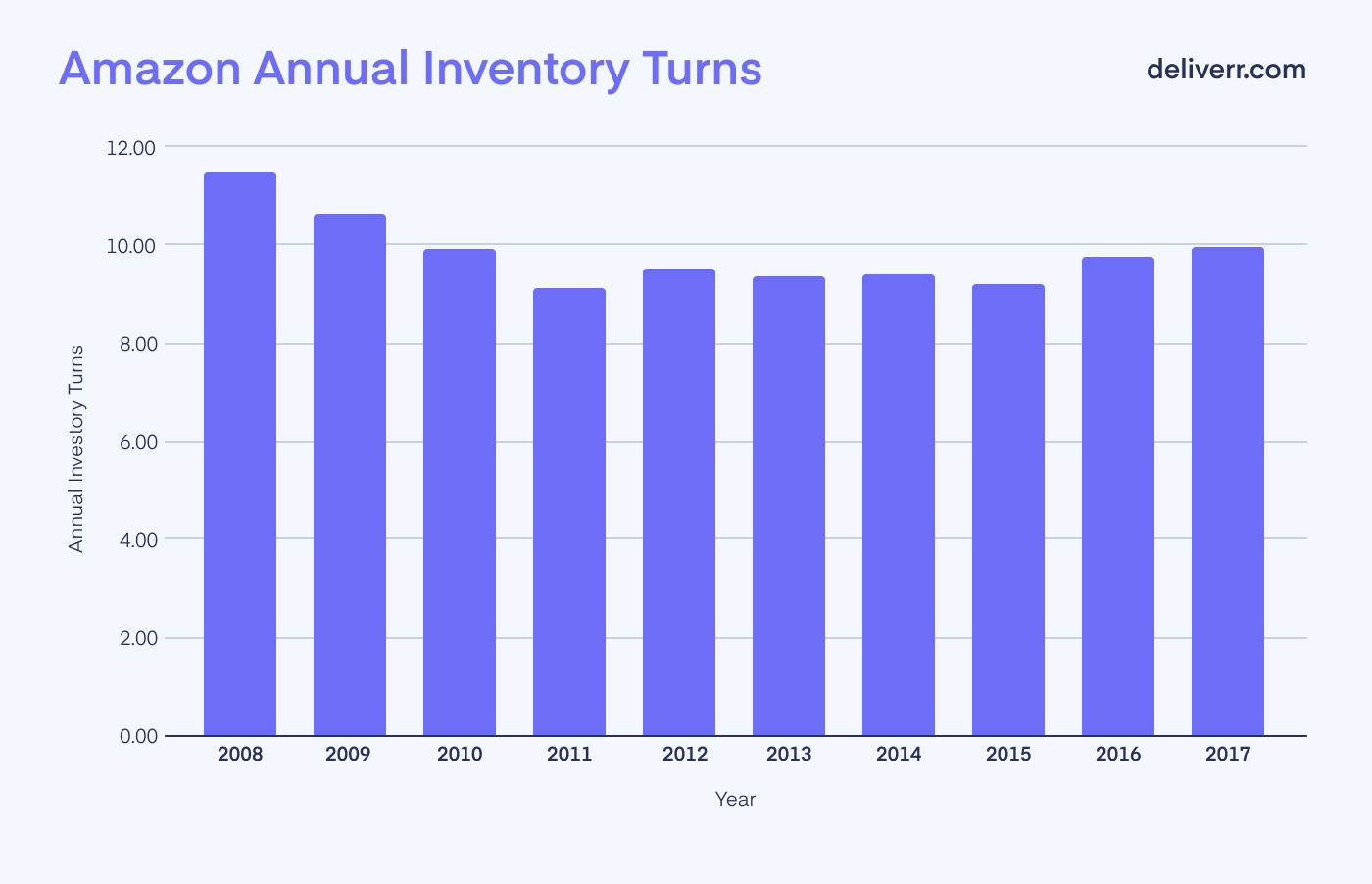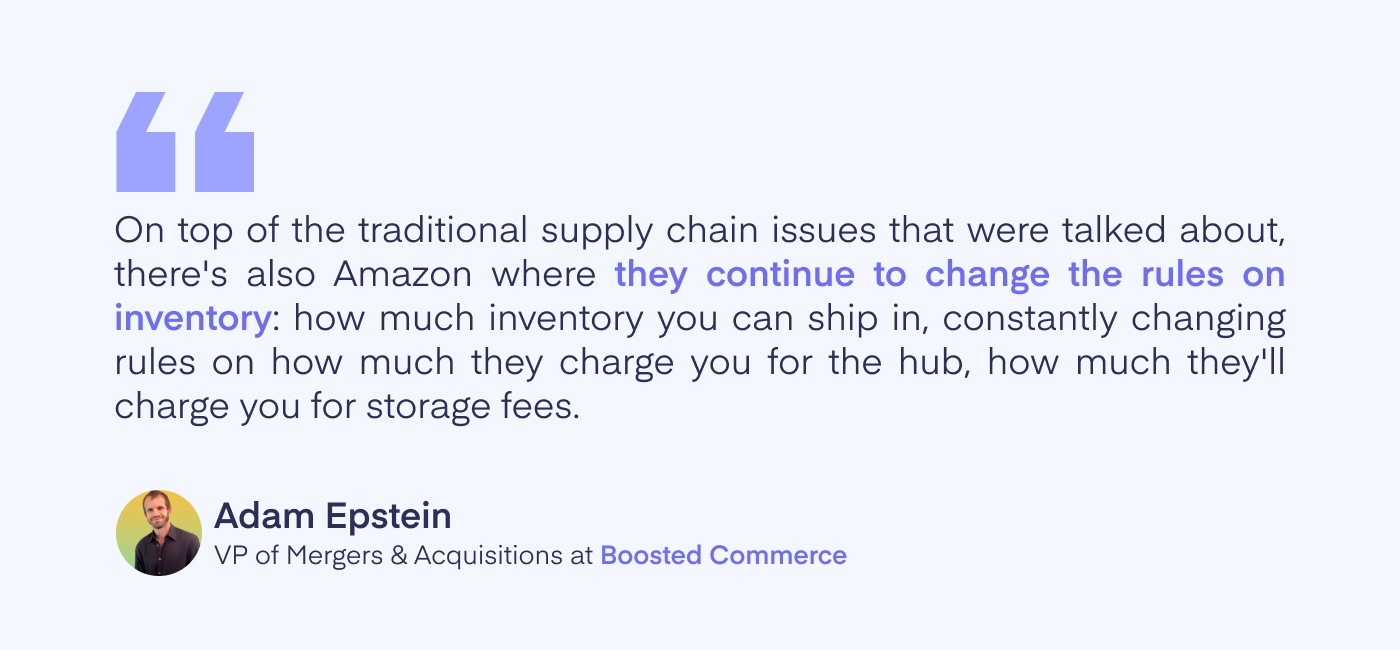The secret of success on Amazon isn’t a one-size-fits-all formula but a combination of several critical factors. As the Amazon marketplace continues evolving, sellers must adapt by leveraging diverse strategies to stand out and achieve sustained growth. This guide will explore the essential components of Amazon success, offering practical insights and expert advice to help you navigate this competitive landscape.
Success on Amazon requires excellence in several key areas, including Amazon advertising, cross-channel marketing, supply chain management, and product differentiation. Mastering these elements will ensure that your products are visible, appealing, and consistently available to customers. Understanding and navigating Amazon’s inventory management system and staying ahead of market trends are crucial for scaling your business effectively. This comprehensive guide will take you through each of these components, providing actionable strategies that can lead to long-term success on Amazon.
The Role of Amazon Advertising in Seller Success
Amazon advertising is crucial for sellers to stand out and drive sales in a competitive marketplace. The platform offers various ad options, such as Sponsored Products, Sponsored Brands, Display Ads, and Video Ads, each designed to target specific customer needs.
To make your Amazon advertising effective, focus on keyword optimization to ensure your products reach the right audience. Utilize both automatic and manual targeting to broaden your reach while honing in on high-conversion search terms. Strategic bid management and dynamic bidding can help balance costs and maximize visibility. Regular performance monitoring, including tracking metrics like ACoS and ROAS, allows for continuous optimization of your campaigns.
Mastering Cross-Channel Marketing for Amazon Growth
Cross-channel marketing is increasingly critical for Amazon sellers aiming to expand their reach and drive sustained growth. In today’s interconnected digital environment, customers interact with brands across multiple platforms, including social media, email, and search engines. A well-executed cross-channel marketing strategy ensures that your brand remains visible and consistent across these touchpoints, leading customers back to your Amazon listings and boosting overall sales.
Effective cross-channel marketing involves several key components:
- Social Media Integration: Utilize platforms like Facebook, Instagram, and Pinterest to create engaging content that drives traffic to your Amazon listings. Social media offers a direct line to potential customers and can be a powerful tool for building brand awareness.
- Email Marketing: Build and nurture an email list to inform your audience about new products, special offers, and promotions. Personalized email campaigns can re-engage past customers and drive repeat purchases.
- Content Marketing: Develop high-quality content, such as blog posts, videos, and infographics, that resonates with your target audience. Content marketing positions your brand as an authority and can drive organic traffic to your Amazon listings.
- SEO Optimization: Optimize your Amazon listings and external content for search engines. Use relevant keywords in your titles, descriptions, and product images to improve your organic visibility on both Amazon and Google.
By mastering these aspects of cross-channel marketing, you can create a cohesive brand experience that guides customers through the buyer’s journey, from discovery to purchase. This will ultimately lead to greater sales and stronger brand loyalty.
Building a Strong Brand on Amazon and Beyond
Building a strong brand is essential for long-term success on Amazon. In a marketplace filled with countless options, a well-established brand helps differentiate your products, attract customers, and foster loyalty. A strong brand enhances visibility on Amazon and builds trust, leading to repeat business and positive word-of-mouth.
To build a strong brand on Amazon and beyond, focus on these core strategies:
- Develop a Clear Brand Identity: Your brand identity should reflect your business’s values and personality. This includes your brand name, logo, and overall visual style, which should be consistent across all platforms, from your Amazon storefront to social media profiles.
- Prioritize Product Quality: High-quality products lead to positive reviews and increased customer satisfaction. Ensure that your products meet or exceed customer quality, functionality, and durability expectations.
- Enhance Customer Experience: Deliver exceptional customer service at every touchpoint, including pre-purchase inquiries and post-sale support. A positive customer experience leads to higher customer retention and positive reviews.
- Leverage Amazon’s Brand Registry: Amazon’s Brand Registry provides enhanced branding tools, such as custom storefronts and enhanced brand content (EBC). These features help you create a more professional and engaging customer shopping experience.
- Use Storytelling: Share your brand’s story, including its origins, mission, and values, to connect with customers emotionally. Storytelling can humanize your brand and foster a deeper connection with your audience.
Focusing on these strategies can help you build a strong brand that resonates with customers, extends beyond Amazon, and drives long-term business success.
Crafting Effective Amazon Advertising Campaigns
Creating effective Amazon advertising campaigns is crucial for driving sales and maintaining a competitive edge on the platform. A well-crafted campaign can significantly increase your product’s visibility, attract customers, and boost sales. However, crafting a successful campaign requires careful planning, strategic thinking, and continuous optimization.
To craft effective Amazon advertising campaigns, clearly define your campaign objectives. Whether you want to increase brand awareness, drive traffic to your product listings, or boost sales, having clear goals will guide your campaign strategy and help measure success. It’s also important to select the right ad type based on your campaign goals. Amazon offers various ad types, such as Sponsored Products, Sponsored Brands, Sponsored Displays, and Video Ads, each serving different purposes and suitable for various stages of the customer journey.
Another key element is effectively targeting your audience. Amazon’s targeting options, including both broad and narrow targeting, can help you maximize your reach while focusing on high-conversion keywords and placements. Creating compelling ad creatives is also essential; your ad visuals and copy should be visually appealing and clearly communicate your product’s unique selling points. High-quality visuals and persuasive messaging are key to attracting clicks and driving conversions.
Once your campaign is live, monitoring and optimizing its performance is crucial. Track key metrics such as impressions, click-through rates (CTR), conversion rates, and ACoS. Regularly reviewing these metrics and making necessary adjustments will help you improve your campaign’s effectiveness and ensure a strong return on investment (ROI).
By following these steps, you can create Amazon advertising campaigns that effectively reach your target audience, increase traffic to your listings, and boost sales. This approach ensures that your campaigns contribute to the secret of success on Amazon FBA, helping you achieve sustained growth on the platform.
Streamlining Your Supply Chain for Maximum Efficiency
A streamlined supply chain is essential for maintaining Amazon’s competitiveness. Efficient supply chain management reduces costs and ensures products are always available to meet customer demand. Building solid relationships with reliable suppliers who consistently deliver quality materials on time is crucial to achieve this. Diversifying your supplier base can mitigate risks while regularly evaluating their performance to ensure you get the best value.
Optimizing inventory is another key aspect—using advanced tools helps maintain balanced stock levels, preventing overstocking and stockouts. Just-in-time practices can further reduce storage costs and improve cash flow. Efficient warehouse operations, enhanced by technologies like barcode scanning and automation, ensure fast and accurate order fulfillment.
Logistics and shipping are critical components that directly impact customer satisfaction. Choosing cost-effective, timely shipping methods and automating the process can streamline operations and improve delivery times. Integrating technology across the supply chain enhances visibility and allows for better performance tracking. These strategies are essential for building an effective supply chain, a cornerstone of Amazon’s long-term success.
Maximizing the Benefits of Amazon FBA
Amazon’s Fulfillment by Amazon (FBA) service offers sellers numerous advantages, including access to Prime customers, streamlined shipping processes, and reduced logistical burdens. By maximizing the benefits of Amazon FBA, sellers can focus on growing their business while Amazon handles the complexities of order fulfillment.
To maximize the benefits of Amazon FBA, consider these best practices:
- Utilize Amazon Prime: FBA makes your products eligible for Amazon Prime, offering fast, free shipping to millions of Prime members. This significantly increases your product’s visibility and appeal.
- Optimize Inventory Levels: Proper inventory management is crucial when using FBA. Overstocking can lead to high storage fees, while understocking can result in missed sales opportunities. Use Amazon’s Inventory Performance Index (IPI) to monitor and optimize your inventory levels.
- Leverage Multi-Channel Fulfillment (MCF): Amazon’s Multi-Channel Fulfillment service allows you to use FBA to fulfill orders from other sales channels, such as your own website or other marketplaces. This can streamline your fulfillment process and reduce logistical complexity.
- Monitor FBA Fees: FBA comes with various fees, including storage fees, fulfillment fees, and removal fees. Regularly review these fees and factor them into your pricing strategy to ensure your products remain profitable.
- Utilize FBA Reports: Amazon provides detailed reports on inventory, sales, and performance metrics. Use these reports to gain insights into your business and identify areas for improvement.
By following these best practices, you can maximize the benefits of Amazon FBA. This allows you to focus on growing your business while Amazon takes care of fulfillment.
Embracing Digitalization in the Shipping Process
Digitalization in the shipping process is essential for Amazon to stay competitive. By adopting digital tools and technologies, sellers can streamline their shipping processes, reduce errors, and improve delivery times. This not only enhances customer satisfaction but also reduces operational costs.
To embrace digitalization in your shipping process, focus on these key areas:
- Adopt Shipping Management Software: Utilize software solutions to automate and manage your shipping operations. These tools can help you compare carrier rates, print labels, track shipments, and manage returns from a single platform.
- Implement Automated Label Printing: Automating the label printing process saves time and reduces errors. Many shipping management platforms offer bulk printing, ensuring all shipments are accurately labeled and processed efficiently.
- Integrate Order Tracking: Provide customers with real-time tracking information and automated notifications. This improves the customer experience and reduces inquiries about order status.
- Use Data Analytics: Leverage data analytics to monitor and improve your shipping process. Track delivery times, shipping costs, and return rates to identify inefficiencies and make data-driven decisions for improvement.
By embracing digitalization in your shipping process, you can enhance efficiency, reduce costs, and improve the overall customer experience, contributing to greater success on Amazon.
Understanding and Managing Amazon Inventory Limitations
Effective inventory management is essential for maintaining a successful Amazon business. Amazon’s inventory storage limits can pose challenges for sellers, particularly those who use FBA. Understanding these limitations and developing strategies to navigate them is crucial for optimizing inventory levels and avoiding unnecessary fees.
Navigating Amazon’s Inventory Storage Limits
Navigating Amazon’s inventory storage limits requires careful planning and strategic management. Sellers must monitor inventory levels, forecast demand accurately, and adjust restocking strategies to stay within Amazon’s limits. Poor management in this area can lead to overstocking, which incurs higher storage fees, or understocking, which affects sales and customer satisfaction.
Here are strategies to help navigate Amazon’s inventory storage limits:
- Monitor Your IPI Score: Amazon’s Inventory Performance Index (IPI) is a critical metric that affects your storage limits. Maintain a high IPI score by reducing excess inventory, improving sell-through rates, and keeping your inventory balanced.
- Use Third-Party Warehousing: Consider third-party warehousing solutions if Amazon’s storage limits are too restrictive. These warehouses can store excess inventory, allowing you to replenish Amazon’s stock as needed.
- Implement Just-in-Time Inventory Practices: Just-in-time (JIT) inventory practices minimize the amount of stock you hold at Amazon’s fulfillment centers. By ordering inventory only as it’s needed, you can reduce storage costs and free up space for high-demand products.
- Conduct Regular Inventory Audits: Regularly audit your inventory to identify slow-moving or excess stock. Running promotions or offering discounts can help move this inventory quickly, freeing up space for more in-demand products.
- Optimize Product Selection: Focus on selling high-turnover products that consistently generate sales. Prioritizing these products helps you maximize your storage space and avoid the costs of slow-moving inventory.
By applying these strategies, you can effectively manage Amazon’s inventory storage limits, ensuring that your inventory levels are optimized for cost-efficiency and customer satisfaction.
Forecasting Demand Accurately
Accurate demand forecasting is a cornerstone of Amazon’s successful inventory management. Predicting future sales trends allows sellers to make informed decisions about inventory levels, reducing the risk of stockouts or overstocking. Advanced forecasting tools and techniques, such as data analytics and machine learning, can help sellers anticipate demand more accurately.
To forecast demand accurately, consider these practices:
- Analyze Historical Sales Data: Use past sales data to identify patterns and trends that can inform your demand forecasts. Look at factors such as seasonality, product life cycles, and the impact of promotions.
- Monitor Market Trends: Stay informed about market trends and external factors that could impact demand for your products, including competitor activity and changes in consumer behavior.
- Leverage Forecasting Tools: Utilize advanced forecasting tools that use algorithms and machine learning to predict demand more precisely. These tools can analyze large datasets to provide actionable insights.
- Collaborate with Suppliers: Work closely with suppliers to ensure they can meet your demand forecasts. Sharing your projections with suppliers can help them plan their production schedules, reducing the risk of stockouts or delays.
- Adjust for Promotions and Events: Account for upcoming promotions or sales events that may cause a spike in demand. Adjust your forecasts accordingly to ensure you have sufficient stock to meet this demand.
By following these practices, you can improve the accuracy of your demand forecasts, leading to better inventory management and a more successful Amazon business.
Finding and Launching Unique Products on Amazon
Finding and launching unique products is crucial for standing out in the competitive Amazon marketplace. Sellers who successfully differentiate their products from competitors are more likely to attract attention and drive sales. This requires staying ahead of market trends and identifying opportunities to offer something truly unique.
Staying Ahead with Market Trends and Product Differentiation
Staying ahead of market trends is essential for success on Amazon. Sellers who monitor emerging trends can identify new product development and differentiation opportunities. Offering products that align with current consumer preferences positions you as a leader in your niche.
To stay ahead with market trends and differentiate your products, consider the following:
- Market Research: Conduct thorough market research to identify emerging trends and gaps in the market. Use tools like Jungle Scout or Helium 10 to analyze search volume, competitor activity, and customer reviews.
- Innovation: Continuously innovate your products to stay ahead of the competition. This could involve adding new features, improving design, or using sustainable materials.
- Customer Feedback: Regularly collect and analyze customer feedback to understand what consumers value most. Use this information to refine your products and make them stand out from the competition.
By staying ahead of market trends and focusing on product differentiation, you can launch unique products that resonate with customers and drive success on Amazon.
Differentiating Your Product from Competitors
Differentiating your product from competitors is crucial in a crowded marketplace like Amazon. Sellers must identify their unique selling points (USPs) and highlight them in every aspect of their product presentation. This could include offering better quality, more features, eco-friendly options, or exceptional customer service.
To effectively differentiate your product, focus on these strategies:
- Highlight Unique Features: Identify and showcase the features of your product that set it apart from competitors. This could include superior materials, innovative technology, or exclusive designs.
- Emphasize Quality: Ensure that your product stands out by offering superior quality. Well-made and durable products are more likely to receive positive reviews and generate repeat business.
- Use Visual Branding: Invest in high-quality product images and videos highlighting your product’s unique features. Effective visual branding can make your product stand out in search results and attract more customers.
- Offer Exceptional Service: To differentiate your brand, provide outstanding customer service. This includes fast response times, easy returns, and personalized communication.
Focusing on these strategies can help you effectively differentiate your product, attract more customers, and achieve sustained success on Amazon.
Final Insights and Future Outlook for Amazon Sellers
Achieving success on Amazon requires a combination of strategic planning, effective execution, and continuous adaptation to changing market conditions. Sellers who master Amazon advertising, optimize their supply chain, manage inventory effectively, and differentiate their products are well-positioned to thrive on the platform. As Amazon continues to evolve, staying informed about the latest tools, trends, and best practices will be crucial for long-term success.
Amazon sellers should focus on innovation, enhancing the customer experience, and maintaining operational efficiency to stay competitive. By embracing new technologies, refining their strategies, and remaining agile in the face of change, sellers can continue to achieve success on Amazon and expand their businesses.
If you know what your secret sauce is – great! Keep going! If you’re still struggling to mitigate obstacles or address some issues, let’s tackle them together. Visit Profit Whales for more valuable insights and strategies to drive your Amazon success. If you need personalized assistance, contact us, and we’ll gladly help you achieve your business goals.
FAQ
What are some common pitfalls new Amazon sellers should avoid?
New Amazon sellers should avoid common pitfalls such as neglecting product research, underestimating competition, failing to optimize product listings, and not managing inventory effectively. These mistakes can lead to poor sales performance and increased costs.
How can I protect my brand from counterfeit products on Amazon?
To protect your brand from counterfeit products, enroll in Amazon’s Brand Registry, which provides tools for monitoring and reporting counterfeit listings. Additionally, consider implementing unique identifiers like holograms or serial numbers on your products to verify authenticity.
What tools are available for Amazon sellers to automate their business?
Amazon sellers can use various tools to automate their business, including inventory management software, repricing tools, advertising automation platforms, and customer service chatbots. These tools help streamline operations and improve efficiency.
How do I handle customer service for my Amazon store?
Handling customer service for your Amazon store involves promptly responding to customer inquiries, addressing complaints, and processing returns efficiently. Tools like Amazon’s Buyer-Seller Messaging Service can help you manage customer interactions more effectively.
How can I expand my Amazon business to international markets?
To expand your Amazon business to international markets, consider enrolling in Amazon’s Global Selling program, which allows you to reach customers worldwide. Research the target market’s regulations, cultural preferences, and demand trends to tailor your offerings for success in each region.



